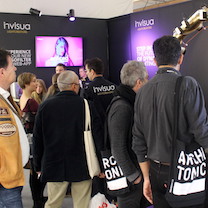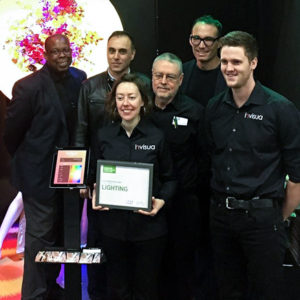
5 quick wins for window displays with real stopping power for 2018
Meeting the VM challenge with dynamic lighting
What makes a window display really stand out? When people stop to watch, even if only for a moment. What leads to the impulse to walk into the store? The power of optimal window lighting is invaluable. In this blog you can read 5 quick wins for window displays with real stopping power, with the use of dynamic lighting.

1. Create focus by playing with the beam width
Often, window displays are evenly illuminated. The existing light fixtures are set-up in a way that creates a calm and even picture. Using wide beams, everything in the window display receives the same amount of light and is therefore visually equally important. It is convenient for the visual merchandiser, as the lighting does not need to be readjusted when the position of the mannequins in the window changes.
However, it is not optimal for grabbing the attention of people walking past the window. Passers-by only have a few seconds to notice the window display at all. The human eye can be helped, by determining in advance what is important and what is not.

Learn from the theatre: if you want people to focus their attention on something, put it in the spotlight. Literally! With dynamic lighting it is possible to put the headpieces of the presentation in the spotlight by using a narrow beam of light. The eyes of the passers-by are attracted to the bright areas where you want their attention. In addition, it creates visually appealing contrasts which makes the window display stand out from a larger distance. A lust for the eye!
2. Playing with dynamics
Dynamic lighting is often thought of as a lively blinking presentation. The association with Christmas lights is quickly made. And of course, that is possible. But in reality, very subtle dynamics are much more effective. And often much more desirable. The human eye is very sensitive to even the smallest change. Window displays with subtly changing dynamic lighting get more attention.
Passers-by often do not even know what caused them to watch. But they did look and that is precisely the intention. Examples of subtle dynamic lighting effects are a short boost in the intensity of the light, a subtle change of color or a change from warm white to cold white. Often the addition of color is not even necessary. A lot can be achieved with white light only.

3. Optimize light color for each product or mannequin
Not every presentation thrives well in the same light. Standard warm white retail lighting for example, makes red shades in the presentation stand out perfectly. But blue tones look less perfect in the same lighting. The colors of the shades of blue are not as clear and fresh as they really are. For blue shades, cool white lighting would be much better. For an optimal presentation of the window display, the lighting can therefore be optimized per campaign, product or mannequin. You want all presented products to come to their full advantage.

4. Adjust the color temperature on the season
Each collection has its own signature. In summer collections often bright and fresh colors are used, while autumn is fuller and warmer in terms of color use. When the lighting scene is part of the window display design, the collection really stands out. With dynamic lighting every season can be simulated. A sultry summer afternoon, a crisp fresh winter morning, a spectacular New Year’s Eve or a setting sun in autumn. Every thinkable setting is possible. By optimizing the display window lighting in this way for the collection shown, it is optimally displayed. And the seasonal purpose of the collection is transferred very powerfully.
5. Move the lighting towards the entrance
Window displays are intended to inspire passers-by to enter the store. Standing out is therefore the first step. Next step is to give a good incentive to walk inside. By pointing the direction of the entrance with dynamic window lighting, we influence passers-by in a subtle way. In a situation with window displays on both sides of the entrance it is possible to animate a movement in the lighting. By creating a light scene in which the spots on both sides of the entrance light up subtly in a movement towards the entrance. Passers are sent unconsciously and encouraged to walk inside. Mission accomplished!


































